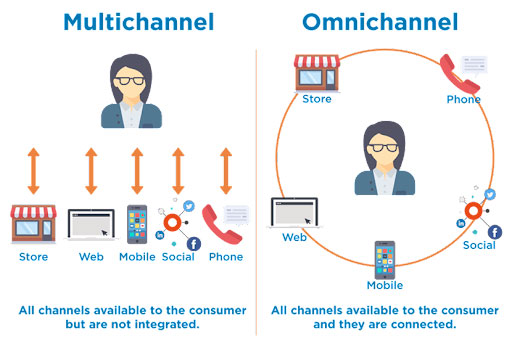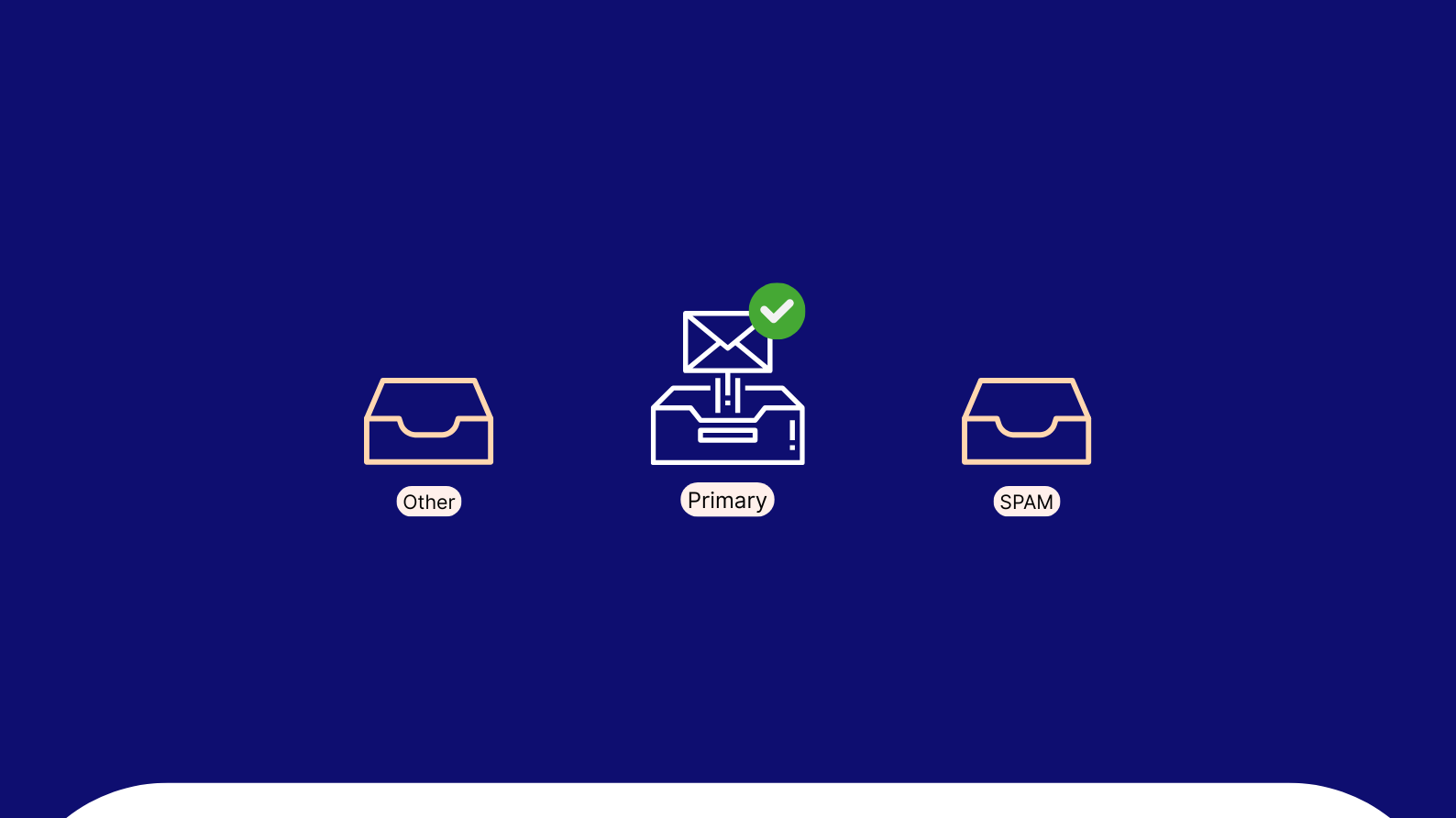First-time store owners, like yourself, have a long list of issues to think about. How to market your e-commerce store ought to be near the top of that list. Right now, it’s all about omnichannel marketing.
This article introduces the concept of omnichannel marketing. It’s a guide to help you set up your own omnichannel marketing strategy and an explanation of why you should.
What is omnichannel marketing?
You can find potential customers in a variety of places. They’re online, on the street, and on social media. Lean too much on one customer source or “channel,” and you’ll be unable to reach many shoppers. An omnichannel marketing strategy seeks to capture the attention of shoppers across channels. Moreover, it provides a seamless shopping experience.
The idea is to be visible to the customer across as many channels as possible. This means reaching them on a variety of devices too. Messaging should be relevant to the individual and persuasive.
So omnichannel marketing is another name for multichannel marketing, right?
Wrong! Multichannel marketing is about presenting a unified message across channels. It’s brand focused and unchanging regardless of who is seeing the message. Communications are designed to appeal to a wide audience. Each channel operates independently of the others and competes to attract more customers.
Omnichannel marketing, on the other hand, puts customers at the center of the strategy. The key word here is “personalization.” Messaging adjusts for individual customers to match their needs and wants. It also changes to be appropriate to the channel on which the customer is receiving messages. The omnichannel approach requires each channel to work together. Customers get communications based on where they are in the buyer’s journey.
Why you should have an omnichannel marketing strategy?
This approach is growing in popularity amongst businesses, large and small. Let’s examine some of the reasons first-time store owners should use this strategy.
- Omnichannel marketing provides an increased purchase rate.
Marketers using a single channel achieved a 3.21% purchase rate. In comparison, omnichannel marketers managed a purchase rate of 12.43%.
- Omnichannel marketing boosts customer loyalty.
It’s cheaper to retain a customer than to gain a new one. This approach solidifies brand loyalty through quality messaging across channels.
- Omnichannel marketing covers a wide base.
Store owners that market through a single channel miss out on large swathes of potential customers. This strategy ensures your new store is seen by more people, gaining you more customers.
- Omnichannel marketing gets customers to spend more.
Messaging can be used to increase the value of the customer’s basket or complete a purchase on an abandoned cart. Customers can be encouraged to buy partner products based on their previous purchases. This is thanks to the personalization aspect of this approach.
How to implement an omnichannel marketing strategy?
We’ve looked at the “why”; now for the “how.” How do you implement an effective omnichannel marketing strategy?
As a first-time store owner, you’re at an advantage over established businesses. Shifting from other marketing strategies can take a lot of work. Stakeholders and team members need convincing when businesses make big changes. You’re in the position of setting up as an omnichannel marketer from the get-go. This will give you a flying start and a secure future.
For first-time store owners like yourself, priority one is to attract customers. That’s not to say you shouldn’t be thinking about how to retain those new customers. This is achievable through the implementation of an omnichannel marketing strategy. Let’s take a look at the steps you must take.
Leverage customer data
The key to an effective omnichannel strategy is data. Each interaction you have with customers is an opportunity to learn crucial insights. Thus, you’ll need to establish a process for collecting information.
Customers will provide many details when they purchase from you. Follow up with requests for feedback and you’ll gain more vital data you can use. For example, imagine a customer is trying to get a quote from your store. Their feedback tells you it’s an awkward process.
Occasional surveys are also useful in learning demographic information. Ask how customers feel about your brand and the competition.
The purpose of this data collection is to find actions you can take to improve. For example, imagine a customer is trying to get a quote from your store. Their feedback tells you it’s an awkward process. In that case, you’ll need to make a change. Perhaps you consider PandaDoc quoting software instead. Whatever you need to do to hone your customer journey.
This data serves another purpose. Over time, you’ll be able to automate many of the communications you send to customers. Data is needed for effective automation. This makes for a more efficient and less costly process.
Build an omnichannel-ready marketing team.
You’ll need to structure your marketing team to put the customer front and center. This is because omnichannel marketing is personalized and responsive to customer demands.
The customer-centric approach needs to be adopted by all aspects of your business. Teams must be able to cooperate and collaborate, keeping the customer in mind all the time. They’ll need to know how to use data to personalize your customers’ journeys. This extends from your marketing team, to customer service reps, and even to logistics.
Keep messaging on target.
It’s not going to be possible to craft your messaging for each individual customer. However, you can target groups of people with similar interests. This allows you to personalize your communications without knowing every customer detail.
Create a number of customer personas. These can be used to create messages that really speak to people. Consider, but don’t limit yourself to, the following details.
- Age range
- Hobbies
- Employment
- Income range
- Communication preferences
Data that buyers have already provided you can be used to retarget them for additional sales. For example, imagine your store sells clothing. You see a customer bought an autumnal sweater from you. You could try an email follow up with suggestions for appropriate accessories such as scarves.
Messaging needs to be focused on the customer. Whether that be based on purchase history or other data, personalization is the point.
Omnichannel must be mobile friendly.
Smartphones are now ubiquitous. For many people, it’s their sole method for using the internet. That means whatever channels you utilize, messaging must be optimized for mobile.
If a customer were to receive promotional materials that aren’t suitable for a mobile screen then they’ll ignore it. If you’re automating communications, ensure the service provider is mobile-friendly.
Continuously monitor and adjust.
Developing an omnichannel marketing strategy is an ongoing process. Things change. Your business will grow and customer behavior can alter. That’s why you must be ready to adjust your strategy when necessary.
When trying something new, always test it on a small section of your audience. You can experiment with how you use channels for different customer personas. If signs are good, then roll it out. If not, rethink it.
Let the data guide your decision-making. As time goes on you’ll gather more and more useful information. Put it to good use and adjust your strategy accordingly.
Tools of the trade
When we use the word “channels” we’re talking about tools of communication. In an omnichannel marketing campaign, how and when you use each tool is vital. Let’s examine the role of some of the most common channels.
Social Media
In reality, social media encompasses many channels. There are many social media platforms. Each has their own strengths and unique functionality. Instagram, for instance, is a particularly visual platform. Twitter, on the other hand, is great for interacting directly with your customers.
For B2B stores, LinkedIn is an excellent channel. It’s a social network for professionals. So a store that provides e-signature services running a free eSign promotion would get a lot of traction here. Far more than on TikTok for instance. The point is, to use appropriate channels for the customers you want to target.
Use the data you’ve collected to target ads on social media. Facebook has particularly good tools for targeting ads. Use targeting to ensure ads have the greatest impact.
Email should be used to follow up. After a customer has purchased from you, it’s a good way to ask for detailed feedback. This provides crucial data. Get more detail by requesting your customers to complete surveys linked via email.
It’s also a powerful tool to prompt customers to complete a transaction on an abandoned basket. Furthermore, inactive customers can be persuaded to return through email. A tempting promotional offer in their inbox might just do the trick.
Emails are a great candidate for automation. You can schedule emails to offer up those promos to lapsed customers after 60 days, for example. Just remember to keep them personalized by utilizing customer data.
SMS
SMS, or text messages, are an excellent way of communicating small bits of information. It’s really great for order confirmations and quick updates. It’s useful for giving customers peace of mind and adds to a seamless customer journey.
This is another channel that is ripe for automation. Upon delivery of their product, customers should receive a quick-to-complete survey. This provides you with a sense check of their satisfaction level. Tie that in with an email survey for extra information with greater detail.
Apps
You can get an app for your own store. This gives you unprecedented control over the content your customers see. It’s the best channel to use for smartphone users, which is almost everyone.
Apps are not only great if your store offers physical goods, but services too. Customers can sign agreements through the app. This is possible with the support of an application programming interface.
An API allows your app to work with services such as HelloSign or DocuSign. It doesn’t have to break the bank either. Store owners looking to find HelloSign API pricing, or other e-signature APIs, will find it’s quite affordable.
Be sure to offer a warm welcome to new users, confirming their registration via email or sms. Keep users engaged through occasional notifications and app exclusive promotions. Harness your app users’ enthusiasm to make them advocates for your brand. Do this by encouraging users to share app content on social media.
Teamwork makes the dream work!
Omnichannel marketing is a fantastic way to provide customers with a seamless buying journey. It’s also a great way to encourage customer loyalty.
Any strategy lives or dies on how well your team works together. Even with automation helping things along, you need everyone to buy in.
















